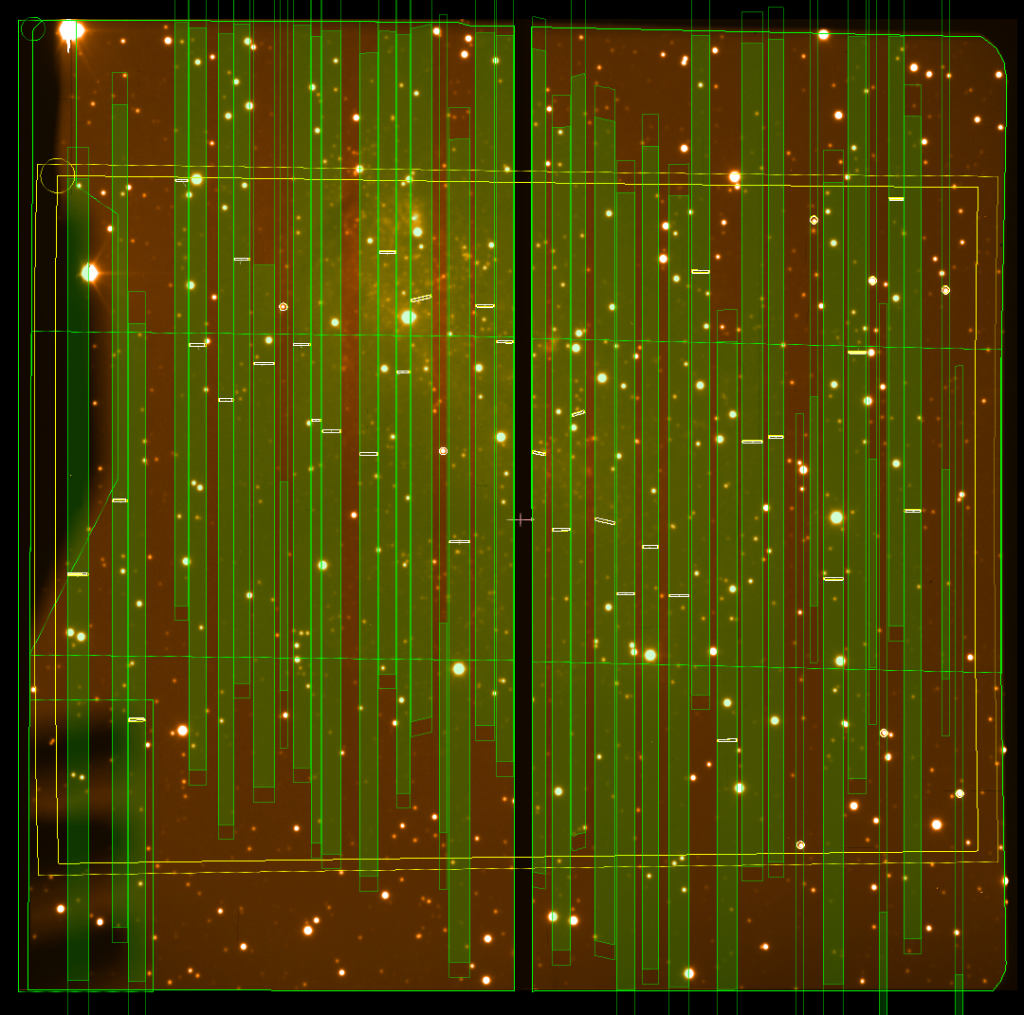The pandemic of Covid-19 has obviously affected our observing runs also. ESO is (still) totally shut down while GTC after some off period it seems that it is under some limited operation.
Our accepted observing program with GTC includes Mulit-Object Spectroscopic observations with the OSIRIS instrument. For this we need to prepare masks, i.e. metal plates on which a number of slits is cut to allow the light of specific targets to pass and acquire their spectrum. In order to optimize the positioning of those slits (and make sure that they are placed on the correct coordinates) we have asked for pre-imaging, e.g. the acquisition of short exposures of the FOVs we have requested (for all our targets). With these and the appropriate software (Mask Designer) it becomes easy to create the masks.
Some weeks ago we actually received (quite unexpectedly, given the pandemic status) a couple of images. That allowed us to prepare the corresponding masks (after resolving all technical difficulties and questions of course). An example of these masks is shown below for the galaxy IC 10. When creating the mask we have to avoid slits that result in overlapping spectra (because we will end up with useless data). That’s why we need to prioritize our targets and select the best combination which will allow for the maximum non-colliding number of targets to be observed, respecting all constraints imposed by the program and the instrument involved. Although mask designing with modern software tools can become easy it is still a time-consuming step that needs caution and accuracy.

So, the masks have been prepared, verified, constructed, … and now we wait for the real spectroscopic observations to be obtained! Fingers crossed!
